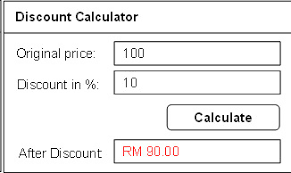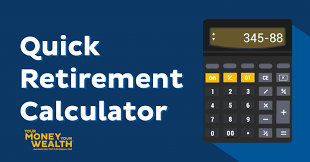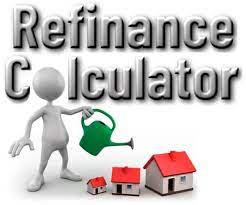Simplify your shopping experience and save money with a powerful tool like Discount Calculators which is also called Discount Calculator Online or Discount Price Calculator. These calculators help you quickly determine discounted prices and potential savings, ensuring you make the most of every deal and promotion.
Discount Calculator
[ez-toc]
What is a discount ?
Discounts are a powerful tool used by businesses to attract customers and increase sales. A discount is a reduction in the price of a product or service, usually offered as an incentive to encourage purchases.
In simple terms, a discount is a percentage or amount deducted from the original price of a product or service. For example, if a product is originally priced at $100 and is discounted by 20%, the new price of the product will be $80.
Discounts are commonly used in retail, e-commerce, and service industries. They are offered for various reasons, such as to:
- Attract new customers
- Encourage repeat purchases
- Clear out old inventory
- Increase sales during slow periods
- Compete with other businesses
Discounts can be offered in different forms, such as:
- Percentage discounts: A percentage is deducted from the original price of the product or service. For example, 10% off or 50% off.
- Dollar discounts: A fixed amount is deducted from the original price of the product or service. For example, $10 off or $50 off.
- Buy-one-get-one-free (BOGO): When a customer buys one product, they get another product for free.
- Bundle discounts: When a customer buys multiple products together, they get a discount on the total price.
To make the most of discounts, it’s important to understand the terms and conditions. Some discounts may have restrictions, such as minimum purchase amounts or specific dates for use. Customers should also be aware of any expiry dates for the discount.
Discounts can be a great way to save money, but it’s important to be cautious of scams. If a discount seems too good to be true, it probably is. Customers should always check the legitimacy of the offer and the business offering it before making a purchase.
In conclusion, a discount is a reduction in the price of a product or service offered as an incentive to encourage purchases. They are commonly used in various industries and can take different forms, such as percentage discounts, dollar discounts, BOGO, and bundle discounts. To make the most of discounts, customers should understand the terms and conditions and be cautious of scams.
What are the types of discount?
We’ll explore the different types of discounts available in the market.
Percentage Discount
A percentage discount is a reduction in the price of a product or service by a percentage. For example, if the original price of a product is $100 and a 20% discount is offered, the customer will pay $80 for the product. Percentage discounts are the most common type of discount and are often used in marketing campaigns to attract customers.
Dollar Discount
A dollar discount is a reduction in the price of a product or service by a fixed amount. For example, if the original price of a product is $100 and a $20 discount is offered, the customer will pay $80 for the product. Dollar discounts are often used to make the product more affordable for customers.
Buy One, Get One Free (BOGO)
A BOGO discount is a type of promotion where customers can buy one product and get another one for free. For example, if a customer buys a shirt, they get another shirt for free. BOGO discounts are often used to increase sales by encouraging customers to buy more than one product.
Clearance Discount
A clearance discount is offered to clear out old or slow-moving inventory. It’s usually a significant reduction in the price of a product or service. Clearance discounts are often used to make space for new products and to recoup some of the costs of the old products.
Seasonal Discount
A seasonal discount is offered during specific times of the year, such as holidays or seasonal changes. For example, a business might offer a discount on winter clothes during the summer season to make room for summer clothes. Seasonal discounts are often used to attract customers during slow periods and to keep up with changing consumer needs.
Conditional Discount
A conditional discount is offered based on specific conditions. For example, a customer might get a discount if they buy a certain number of products or spend a certain amount of money. Conditional discounts are often used to encourage customers to buy more products or to increase the value of each sale.

Discount formula
The discount formula is used to calculate the discounted price of a product or service.
The formula for calculating the discounted price of a product or service is as follows:
Discounted Price = Original Price – (Discount Rate x Original Price)
Where, Discount Rate = Discount / Original Price
Let’s understand this formula with an example. Suppose the original price of a product is $100 and a discount of 10% is offered. To calculate the discounted price, we can use the above formula:
Discount Rate = 10 / 100 = 0.1
Discounted Price = 100 – (0.1 x 100) Discounted Price = 100 – 10 Discounted Price = $90
So, the discounted price of the product is $90.
The discount formula can also be used to calculate the discount rate or percentage. The formula for calculating the discount rate is as follows:
Discount Rate = (Discount / Original Price) x 100
Let’s understand this formula with an example. Suppose the original price of a product is $100 and the discounted price is $90. To calculate the discount rate, we can use the above formula:
Discount Rate = (100 – 90) / 100 x 100 Discount Rate = 10%
So, the discount rate is 10%.
The discount formula can be used in different scenarios, such as in retail, e-commerce, and service industries. It helps businesses to determine the discounted price of a product or service and to offer discounts that are attractive to customers.
It’s important to note that discounts are often subject to certain terms and conditions, such as minimum purchase amounts or specific dates for use. Customers should always be aware of the terms and conditions of the discount before making a purchase.
In conclusion, the discount formula is used to calculate the discounted price of a product or service. It can also be used to calculate the discount rate or percentage.
Brief history of price discounts
Price discounts have been around for centuries and are a marketing tactic used to attract customers and increase sales. In this article, we’ll take a brief look at the history of price discounts and how they have evolved over time.
Price discounts have been used throughout history by various civilizations, such as the Greeks and Romans. These discounts were often used to clear out old or excess inventory and to encourage customers to buy more products.
In the 19th century, retailers began to use price tags and fixed prices instead of haggling over the price of goods. This led to the development of more structured pricing strategies, including discounts. The first recorded use of a percentage discount was by a department store in the US in the late 1800s.
During the Great Depression of the 1930s, businesses started using price discounts as a way to stimulate sales during tough economic times. Retailers would offer discounts on certain items or offer bulk discounts to encourage customers to buy more.
In the 1950s and 1960s, price discounts became more common as supermarkets and discount stores started to gain popularity. These stores would offer lower prices than traditional retailers, often by buying in bulk and passing on the savings to customers.
In the 1990s, the rise of e-commerce brought about new forms of price discounts, such as coupon codes and flash sales. These discounts were often offered exclusively online and for a limited time, creating a sense of urgency for customers to make a purchase.
Today, price discounts are a common marketing tactic used by businesses of all sizes and industries. They are often used to attract new customers, clear out old inventory, and increase sales during slow periods. With the rise of social media and online shopping, price discounts have become more visible and accessible than ever before.
In conclusion, price discounts have a long history and have evolved over time as a marketing tactic. From the Greeks and Romans to modern e-commerce sites, discounts have been used to attract customers and increase sales. Today, price discounts are a common sight and are expected by customers.
How to calculate discount and sale price?
Calculating the discounted price and sale price is essential for both businesses and customers to make informed decisions. In this article, we’ll explain how to calculate discount and sale price.
Calculating Discount
The first step in calculating the discounted price is to determine the discount percentage. To calculate the discount percentage, we use the following formula:
Discount Percentage = (Discount Amount / Original Price) x 100
For example, if the original price of a product is $100 and a discount of $20 is offered, we can calculate the discount percentage as follows:
Discount Percentage = (20 / 100) x 100 Discount Percentage = 20%
Once we know the discount percentage, we can calculate the discounted price using the following formula:
Discounted Price = Original Price – (Discount Percentage x Original Price)
For example, if the original price of a product is $100 and a discount of 20% is offered, we can calculate the discounted price as follows:
Discounted Price = 100 – (20 / 100 x 100) Discounted Price = $80
So, the discounted price of the product is $80.
Calculating Sale Price
Calculating the sale price is similar to calculating the discounted price. The only difference is that the sale price includes the discount.
To calculate the sale price, we use the following formula:
Sale Price = Original Price – Discount Amount
For example, if the original price of a product is $100 and a discount of $20 is offered, we can calculate the sale price as follows:
Sale Price = 100 – 20 Sale Price = $80
So, the sale price of the product is $80.
How do I calculate discount percentage?
Calculating discount percentage is an important skill to have when shopping or running a business. Discount percentage is the percentage by which a price is reduced from its original value. In this article, we’ll explain how to calculate discount percentage using a simple formula.
The formula for calculating discount percentage is:
Discount Percentage = (Discount Amount / Original Price) x 100
To use this formula, you need to know the original price of the item and the amount of discount applied to it.
Let’s take an example to understand this better. Suppose a product’s original price is $100 and a discount of $20 is offered. To calculate the discount percentage, we can use the formula:
Discount Percentage = (20 / 100) x 100 Discount Percentage = 20%
So, the discount percentage in this case is 20%.
You can also use this formula to calculate the discount percentage when the discount is expressed as a percentage. For example, if a product is originally priced at $100 and is discounted by 20%, the discount amount would be $20, and we can calculate the discount percentage as follows:
Discount Percentage = (20 / 100) x 100 Discount Percentage = 20%
So, the discount percentage in this case is also 20%.
What are fake discounts?
Some businesses use fake discounts to trick customers into thinking they are getting a good deal. In this article, we’ll explain what fake discounts are and how to identify them.
Fake discounts, also known as fake sales or fake markdowns, are discounts that are not genuine. These discounts are often used to create the illusion of savings when in reality, the price has not been reduced at all. Fake discounts can be misleading and can lead customers to make purchases based on false information.
There are several ways that businesses can use fake discounts:
Inflated original prices: Businesses may inflate the original price of a product to make the discount seem bigger than it actually is. For example, a product may be advertised as 50% off, but the original price may have been inflated to make the discount seem larger.
Phantom discounts: Businesses may advertise a product as being on sale when it was never sold at the original price. For example, a product may be advertised as being 30% off, but in reality, it was always sold at the discounted price.
Limited-time discounts: Businesses may create a sense of urgency by advertising a limited-time discount, even though the discount is available all the time. This tactic can lead customers to make impulse purchases without researching the actual value of the product.
To avoid falling for fake discounts, customers should do their research and compare prices across different retailers. They should also look at the original price of the product and the history of the discount. If a discount seems too good to be true, it probably is.
In conclusion, fake discounts are a deceptive marketing tactic used by some businesses to create the illusion of savings. These discounts can mislead customers and lead them to make purchases based on false information. Customers should be aware of the tactics used to create fake discounts and do their research before making a purchase.
Why do clearance sales happen?
Clearance sales are a common occurrence in the retail industry. These sales typically involve a significant reduction in the price of products that are about to be discontinued or are no longer selling well. In this article, we’ll explain why clearance sales happen and what benefits they offer for both businesses and customers.
Make room for new inventory
One of the primary reasons for clearance sales is to make room for new inventory. Retailers need to keep their inventory fresh and updated to keep customers interested and engaged. By clearing out old inventory through clearance sales, retailers can make space for new products that are more likely to sell.
Liquidate excess inventory
Clearance sales are also a way for retailers to liquidate excess inventory. When retailers order too much of a particular product or when a product is not selling as well as expected, clearance sales can be used to sell the excess inventory and recoup some of the costs.
End of season sales
Another reason for clearance sales is the end of a season. Retailers often offer clearance sales at the end of a season to make room for new seasonal products. For example, a clothing store may offer a clearance sale on winter clothes at the end of the winter season to make room for spring and summer clothes.
Increase foot traffic
Clearance sales can also be used as a marketing tactic to increase foot traffic to a store. By offering significant discounts, retailers can attract customers who may not have visited the store otherwise. These customers may also make additional purchases while in the store, increasing sales for the retailer.
In conclusion, clearance sales happen for various reasons, including making room for new inventory, liquidating excess inventory, and increasing foot traffic. These sales offer benefits for both businesses and customers, allowing businesses to clear out old inventory and recoup some costs while providing customers with the opportunity to purchase products at significantly reduced prices.
What is a Discount Price Calculator?
A discount price calculator is an online tool that helps you calculate the price of a product after a discount has been applied. These calculators use a simple formula to determine the discount percentage, the price before and after the discount, and the ultimate savings you can get. Discount price calculators can be used for any product or service and are especially helpful when shopping for large-ticket items like electronics or furniture.
How to Use a Discount Price Calculator?
Using a discount price calculator is easy. Follow these simple steps:
Find a reliable discount price calculator online. There are many free calculators available.
Enter the original price of the product or service you want to purchase.
Enter the discount percentage or discount amount offered by the retailer.
Click on the “calculate” button.
The calculator will display the discounted price, the amount saved, and the price before the discount.
How Can You Maximize Your Savings with a Discount Price Calculator?
By using a discount price calculator, you can maximize your savings in several ways:
Determine the Discount Percentage: A discount price calculator can help you determine the actual discount percentage being offered by the retailer. This way, you can make an informed decision about whether the discount is worth it or not.
Calculate the Price Before and After Discount: A discount price calculator can help you calculate the price before and after the discount, making it easier to determine the actual savings you can get.
Unlock Ultimate Shopping Deals: By using a discount price calculator, you can find the ultimate shopping deals by comparing prices across different retailers. This way, you can find the best deal and save the most money.
Here are some additional benefits of using a discount price calculator:
Save Time: A discount price calculator can save you time by quickly calculating the discounted price of a product or service. You no longer need to manually calculate the discount percentage or price before and after discount.
Make Informed Purchase Decisions: By using a discount price calculator, you can make informed purchase decisions. You can compare prices across different retailers and determine the actual savings you can get, allowing you to choose the best deal.
Budgeting: A discount price calculator can help you budget your money better. By knowing the actual price before and after discount, you can determine how much money you need to spend and how much you can save.
Marketing: Businesses can use discount price calculators as a marketing tactic. By offering discounts and using a discount price calculator, businesses can attract customers and increase sales.
Discount price calculators can also be used in a variety of industries beyond retail. For example, in the travel industry, discount price calculators can help travelers find the best deals on flights, hotels, and rental cars. In the service industry, businesses can use discount price calculators to offer promotions and discounts on services like haircuts or spa treatments.
Moreover, discount price calculators can be used to negotiate deals with suppliers or vendors. By using a discount price calculator, businesses can determine the actual cost of goods or services and negotiate better prices with suppliers. This can help businesses save money and increase profit margins.
Finally, it’s important to note that discount price calculators can also help prevent overspending. In today’s consumer-driven culture, it’s easy to get caught up in the excitement of a sale or promotion and overspend. By using a discount price calculator, you can determine the actual cost of a product or service after the discount has been applied, helping you stay within your budget.
Overall, a discount price calculator is a valuable tool for both customers and businesses. It can save time, help make informed purchase decisions, budget better, and even be used as a marketing tactic.
In conclusion, a discount price calculator is an excellent tool for maximizing your savings when shopping. By using a discount price calculator, you can determine the discount percentage, calculate the price before and after discount, and unlock ultimate shopping deals. With this knowledge, you can make informed purchase decisions, save money, and get the best deals possible.
Frequently Asked Questions (FAQ)
1. What is a discount?
- A discount is a reduction in the original price of a product or service. It is often offered to entice customers, boost sales, or as a promotional strategy.
2. Why are discounts offered by businesses?
- Discounts are offered for various reasons, including attracting new customers, clearing out excess inventory, increasing sales during specific periods (e.g., holiday seasons), and rewarding loyal customers.
3. How can I calculate the discounted price of a product or service?
- You can calculate the discounted price using a Discount Price Calculator. This tool allows you to input the original price and the discount percentage or amount to determine the final discounted price.
4. What is a Discount Price Calculator?
- A Discount Price Calculator is an online tool or software that helps consumers and businesses calculate the final price of a product or service after applying a discount. It simplifies the calculation process, providing quick and accurate results.
5. How do I use a Discount Price Calculator?
- To use a Discount Price Calculator, you typically enter the original price of the item or service and the discount percentage or amount. The calculator will then provide you with the discounted price.
6. What is the difference between a percentage discount and a fixed amount discount?
- A percentage discount is a reduction based on a percentage of the original price (e.g., 20% off), while a fixed amount discount is a specific monetary reduction (e.g., $10 off).
7. Can I stack multiple discounts on a single purchase?
- In many cases, businesses do not allow the stacking of multiple discounts on a single purchase. However, it’s essential to check with the specific retailer or service provider, as policies may vary.
8. Are discounts always a good deal?
- Discounts can be a good deal if they result in a lower price for a product or service you need or want. However, it’s important to assess the value and quality of the item or service to ensure it meets your needs.
9. Do discounts impact the quality of products or services?
- Discounts themselves do not necessarily indicate a decrease in quality. Many high-quality products and services are offered at discounted prices as part of sales and promotions.
10. Are there any hidden costs associated with discounts?
While discounts can be beneficial, it’s essential to be aware of any conditions or limitations that may apply, such as minimum purchase requirements, expiration dates, or additional fees.
11. Can I negotiate discounts with retailers or service providers?
Yes, you can sometimes negotiate discounts, especially for larger purchases or when buying in bulk. It’s worth asking if a retailer or service provider can offer a better price.
12. What is the significance of knowing the discounted price?
Knowing the discounted price is crucial for budgeting and making informed purchasing decisions. It allows you to compare prices, assess the value of the product or service, and determine if the discount is genuinely a good deal.
13. Is it better to receive a percentage discount or a fixed amount discount?
Whether a percentage discount or a fixed amount discount is better depends on the original price of the item or service and your specific needs. In some cases, a percentage discount may offer more significant savings, while in others, a fixed amount discount may be more advantageous.
Discount Calculators – Discount Price Calculator – Discount Calculator Online
Legal Notices and Disclaimer
All Information contained in and produced by the ModernCalculators.com is provided for educational purposes only. This information should not be used for any Financial planning etc. Take the help from Financial experts for any Finace related Topics. This Website will not be responsible for any Financial loss etc.





